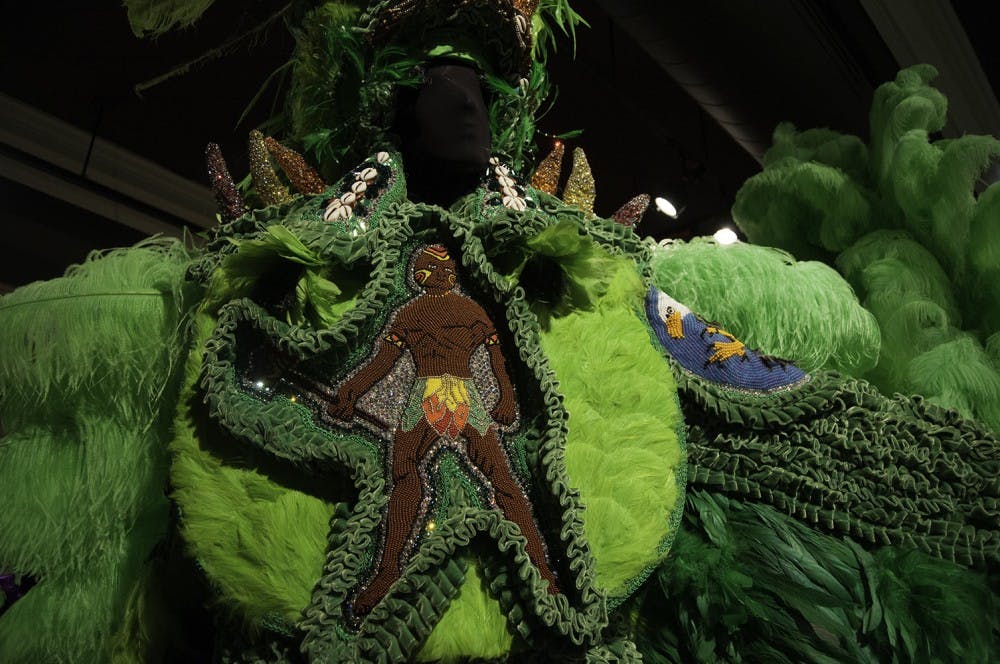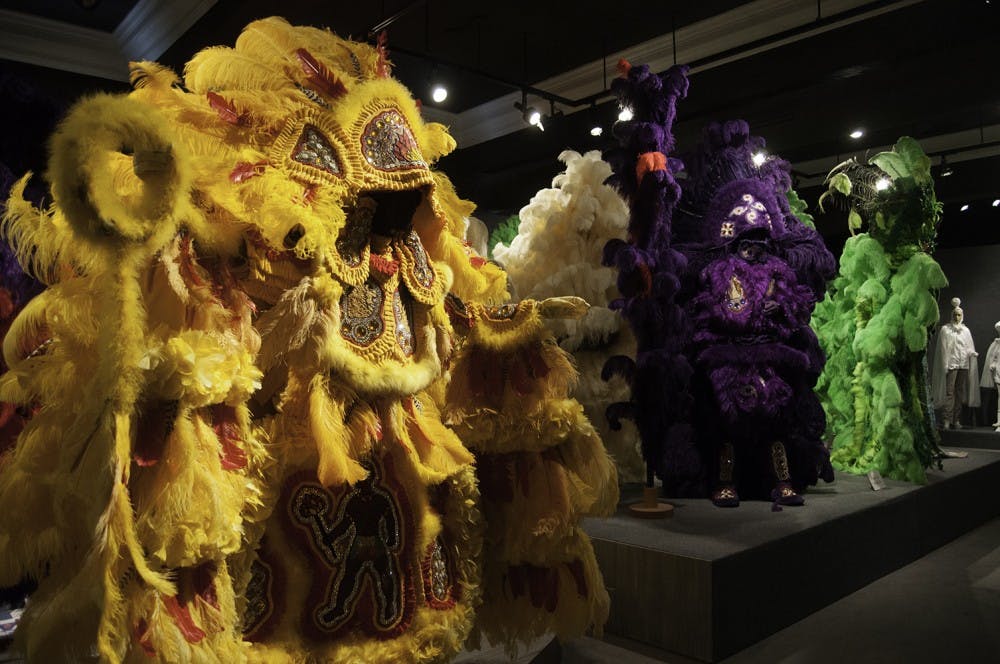For the fifth exhibit in the Diverse Voices Gallery, USC’s McKissick Museum is bringing a slice of Louisiana to South Carolina with the recently opened year long installation of “WELL SUITED: The Costumes of Alonzo V. Wilson for HBO’s Treme.”
Earlier this year, the Columbia Museum of Art brought “CUT! Costume and the Cinema,” as a featured exhibit. This traveling exhibit featured the theatrical stylings of famous costume designers from stage and screen to Columbia.

The McKissick Museum on campus at USC continued the costume theme in their latest installment, “WELL SUITED,” a traveling exhibit that includes nine hand-crafted Mardi Gras Indian suits from the popular HBO show “Treme.”
“Treme” is a series set in a post-Katrina New Orleans, when residents are slowly beginning to return to their homes. At this time, many are faced with housing displacement due to the limited availability of temporary storm housing options. The exhibit focuses on individuals and families attempting to rebuild their lives and homes in Treme, America’s oldest African-American neighborhood and an influential place of music and art.
One facet of Treme is the historically preserved traditions of the Mardi Gras Indians. The Mardi Gras Indians consist of African Americans living in the inner city of New Orleans. Many of these individuals felt as if they couldn’t participate in traditional Mardi Gras celebrations due to segregation.
Eventually, members of the community began to create their own individual way of celebrating the holiday. It is thought that their name and culture is in part a tribute to the Native American societies that helped black individuals escape slavery in the 1800s. To this day, every year the Mardi Gras Indians create highly elaborate suits to wear during their parade and celebrations.

Laura Green, the Folklife and Traditional Arts Program Director at McKissick Museum, emphasized the rich cultural history of the Mardi Gras Indians when she discussed why the exhibit was brought to the USC campus.
“The show really explores issues of environmental racism and the gentrification of the city, and the terrible crime that was happening,” Green said. “The flipside of that was the people’s resilience and the importance of the culture, and how the culture almost became a way to overcome adversity,” she continued.
Alonzo V. Wilson designed the suits for the first three seasons of “Treme.” During the first season, Wilson worked closely with members of the Mardi Gras Indian community to create suits that were as authentic as possible.
“I’m a folklorist, and it's pretty similar to being an anthropologist," Green said. "We do ethnography and work closely with communities, and hope to have a pretty strong sense of ethics when working with cultural communities, and I was pretty impressed by the extent to which the producers and everybody worked closely with the community to try and get it right."
The exhibit features nine of his creations as well as interviews from cast members, design sketches, clips of the series and behind the scenes images.
“They’re not just beautiful, they’re spectacular, they’re unbelievable in terms of their workmanship and design, but they are also very meaningful,” Green said, referring to the detailed suits.

The exhibit opened on Aug. 1 with a reception and discussion with Alonzo V. Wilson himself.
Entrance to the museum is free for students and can be accessed weekdays 8:30 a.m. to 5 p.m. and on Saturdays 11 a.m. to 3 p.m.
“Our mission at McKissick Museum is telling the story of the American South," Green said. "We saw this exhibit as a way to explore some of these issues of cultural hybridity, people borrowing other's traditions, adornment and identity."

